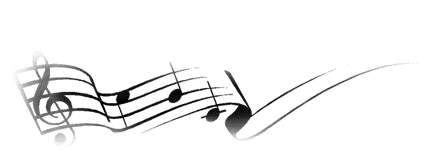TUNE TYPES:
...what do we play anyway...
Our repertoire consists of tunes (independent instrumental pieces of music) as well as sets (several similar tune types together) respective medleys (several different tune types together). Latter can be build traditional - like March + Strathspey + Reel (MSR) or Slow Air + Hornpipe + Jig (SHJ) for example - or build up arbitary.
Combinations of slow and fast tune types in one medley are quite typical for scottish bagpipe-music, or tunes which start with a solo bagpipe and then are raised by the inset of the rest of the band. Tunes, sets and medleys can have also quite different timings and rhythms. Virtually every tunes has more parts.
 MARCH (Quick March, Retreat March)
MARCH (Quick March, Retreat March)
As the scottish great highland bagpipes (GHB) have their origin in military music, marches are one of the most played and known tune types on this instrument. The most known march may be scotland the brave, counted as an inofficial national anthem of scottland. Most marches are Quick March, only some are so called Retreat March. Those are played more "sostenuto".
Typical time signatures for marches are: 2/4, 3/4, 4/4 and 6/8.
Most marches have 2 or 4 repeated parts, mostly build with an a-b-a-c pattern.
 SLOW TUNE (Slow Air, Slow March, Irish Air, Hymn)
SLOW TUNE (Slow Air, Slow March, Irish Air, Hymn)
These tune types are played quite slowly and either "sostenuto" (air) or proudly (hymn). They are not linked to dances, so they are played more like instrumental ballads. Beside marches, airs (with the means of "melody") od hymns are the one of the most known tune types. Well known pieces are Amazing Grace and Highland Cathedral, due to these pieces many people connect bagpipes with slow melodies.
Typical time signatures for slow tunes are: 2/4, 3/4, 4/4 and 6/8.
Airs and hymns have usually 2 Parts (repeated and non-repeated), mostly without common patterns.
 STRATHSPEY
STRATHSPEY
Strathspeys are dances with strongly stressed rhythm. This is expressed in the associated dance - the Highland Fling - through rhythmical hopping on the spot while the dancing steps. Strathspeys are played more slowly in contrast to reels or hornpipes and are either for solo dancers (Highland Fling) or in groups of 4 with travelling figures. Main characteristics are "Dot-Cuts" and so called "scotch snaps" ("Cut-Dots": 16th notes followed by dotted 8th notes).
The typical time signature for strathspeys is 4/4 with the distinctive accent pattern "strong-weak-medium-weak".
Strathspeys have usually 2 or 4 repeated parts, mostly build with an a-b-a-c pattern.
 REEL
REEL
Reels are also dances, but mainly for groups of 3 or 4 people. They are a bit faster but at the same "straightness" as strathspeys. It should be noted that there are phases of "setting" (everyone dances on the spot) and "travelling" (some kind of 8-shaped figure where dancers changing their spots) in the performance. The name "reel" is probably from norse origin.
The typical time signature for reels is 2/2. A notation in 4/4 time can be seen sometimes, but it's rhythmically wrong in the strict sense. One bar of a reel has two beats with an half note each, the beats are on the first and fifth eighth-note.
Reels have usually 2 or 4 repeated parts, build sometimes with an a-b-a-c pattern.
 HORNPIPE
HORNPIPE
Hornpipes are fast, lively dances, also called sailor's dances. These are often solo dances, but sometimes also danced in groups with up to 6 dancers. There are "round" and "pointed" hornpipes, while latter are not as strictly stressed as strathspeys. Hornpipes had historically no real influence in scottish pipemusic, they became popular around 1940.
The typical time signature for hornpipes is 2/4. Very old, primordial hornpipes had often a time signature of 3/2.
Hornpipes have usually 2 or 4 repeated parts, often build with an a-b-a-c pattern.
 JIG (Scottish/Irish Jig, Slip Jig, Slide Jig)
JIG (Scottish/Irish Jig, Slip Jig, Slide Jig)
These tunes are well known from the irish music, often played with violins and tin-whistles, rhythmically supported by a bodhrán. Many favourable jigs were adopted to the GHB later on. Typical for jigs are irish tap-dances, well known on an international level by shows like Lord of the Dance or Riverdance. In general jigs are based rhythmically on groups of 3 (eighth-)notes.
Therefore most typical time signature for jigs is 6/8. Special cases are slip jig (9/8) and slide jig (12/8) which are based on respectively expanded rhythms.
Jigs have usually 2 up to 6 repeated parts, build with an a-b-a-c pattern.
 WALTZ
WALTZ
The waltz is a couple dance invented around 1770 in the austrian-southgerman area. The name comes from the middle-high-german term "walzen" - which means something like "turning". The waltz is danced in a closed stance with fast turns and a fixed step-pattern. Best known waltz for the GHB should be Mull of Kintyre.
Typical time signature for waltzes is 3/4.
Waltzes have often similar structures as marches, but are more suited to dance along.
 SONG
SONG
A song is an instrumental piece, which is normally known as a vocal composition (sung tunes).
Songs can have all common time signatures.
There are typical structures for songs, mostly based on the chorus/verse pattern.
 SUITE
SUITE
A suite (french for "sequence") is a musical cycle of several instrumental pieces in a certain order, complemented to a kind of medley in one piece of music.
Suites unite usually similar tunes with different time signatures and tune types in one piece of music.
There are no typical structures for suites regarding part-patterns or repeats.


